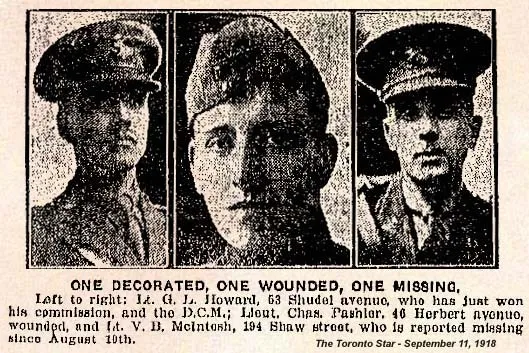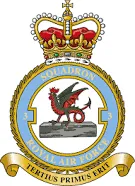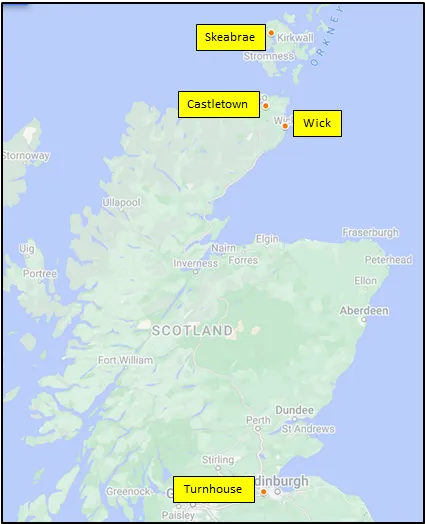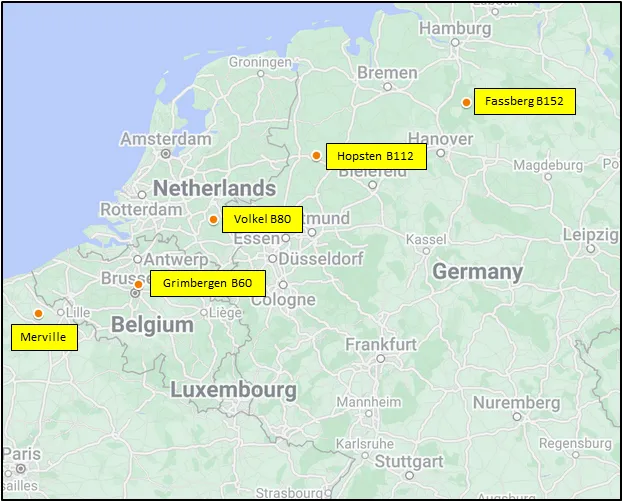McIntosh, Victor Brown
Missing in Action 1918-08-10


Birth Date: unkown date
Born: Aurora, Ontario
William David McIntosh & Selina Puddy
Home: Toronto, Ontario
Enlistment:
Enlistment Date: Unknown
Service
RAF
Unit
3 (F) Sqn- Squadron (RAF)
Tertius Primus Erit The third shall be first
Base
France
Rank
Lieutenant
Position
Lieutenant
Service Numbers
Home
 Toronto, Ontario
Toronto, Ontario
Sopwith Camel

The Sopwith Camel became the most successful British fighter of the First World War. The Sopwith F.1 and 2F.1 Camel first went into operations on the Western Front in 1917 and then served in virtually every theatre of Royal Flying Corps (RFC), Royal Naval Air Service (RNAS) and Royal Air Force (RAF) service. Several Canadian aces used the Camel as their mount. The Camel was very manoeuvrable, and it could be tricky to fly in the hands of a novice pilot. For experienced pilots, however, the aircraft proved to be a superb fighter.
The Camel's machine-guns were mounted on the forward fuselage with their breeches enclosed in a faired metal cowling "hump" that gave the Camel its name. Several Camels were also shipped to Canada in the post-war period as part of an Imperial gift. Three registered Sopwith F.1 Camels entered service with the RCAF at Camp Borden in 1924. The following year, the RCAF purchased seven additional aircraft to provide further spares for the active aircraft. These latter aircraft were in fact 2F.1 models that had been "navalized" variants. Used primarily by wartime experienced fighter pilots for refresher training, the Camels lasted another five years before finally being scrapped.Wikipedia
 Sopwith Camel - Kestrel Publications
Sopwith Camel - Kestrel Publications
3 (F) Sqn Tertius Primus Erit (x)
History of the Squadron during World War II (Aircraft: Hurricane I, IIb, IIc, Typhoon Ib, Tempest V)

No. 3 Squadron is the oldest squadron in the RAF, Having been formed on 13th May 1912. It served through out World War I. It served in fighter and ground attack roles. Between the wars, it was disbanded and reformed a number of times, flying a number of different types of aircraft. Before the start of the Second World War No 3 Squadron was posted as part of Fighter Command to RAF Station Biggin Hill and equipped with the Hawker Hurricane Mk I. On the outbreak of war, it moved to Croydon, then to Hawkinge and Kenley. It was not in action until May, 1940, when it was briefly deployed to Merville, France as part of 63 Wing in support of the British Expeditionary Force following the German attack on the West. It was forced to withdraw after 10 days, having claimed 60 German aircraft for the loss of 21 of its own. Once back up to strength, No. 3 Squadron was used from May 1940 to April 1941 as air defence for the Royal Naval base at Scapa Flow and convoy protection, operating from Wick, Castletown and Skeabrae, remaining in Scotland until April 1941, when it moved south to RAF Martlesham Heath.
The squadron was involved in night-fighting, where it co-operated with "Turbinlite" searchlight equipped Douglas Havocs (the searchlight in the Havoc was intended to illuminate enemy aircraft so that the Hurricanes could attack them), but with no success. The Hurricane was not well equipped for night fighting. In June 1941 it moved to RAF Stapleford Tawney operating four-cannon Hurricane IIs in 'Rhubarb' attacks on defended ground targets and shipping in northern France and Belgium, flying from Stapleford Tawney and Hunsdon. It participated in the Dieppe raid, among other activities. In February 1943 it re-equipped with the Hawker Typhoon Ib for fighter-bomber and anti-shipping strikes, flying from a number of bases in SE England. It re-equipped in March 1944 with the new Hawker Tempest fighter, operating over the Normandy beach-head and against German V1 flying bombs, claiming 288 V-1s shot down.
It then deployed across the Channel, flying as part of the 2 TAF fighting through the low countries and into Germany. Amongst its pilots was F/L Pierre Clostermann, who flew with 3 Squadron from March 1945 until the end of the war in Europe
Maps for Movements of No. 3 Squadron RAF 1940-45
 MAP 1: No 3 Squadron bases, Scotland May 1940-April 1941 (right-click on image to display enlarged view in new tab) |  MAP 2: No. 3 Squadron bases, SE England April 1941-September 1944 |  MAP 3: No. 3 Squadron bases in Europe September 1944-May 1945 |
 Canadian Virtual War Memorial
Canadian Virtual War Memorial Commonwealth War Graves Commission
Commonwealth War Graves Commission www.findagrave.com
www.findagrave.com Sopwith Camel
Sopwith Camel Wikipedia Sopwith Camel
Wikipedia Sopwith Camel Harold A Skaarup Web Page
Harold A Skaarup Web Page